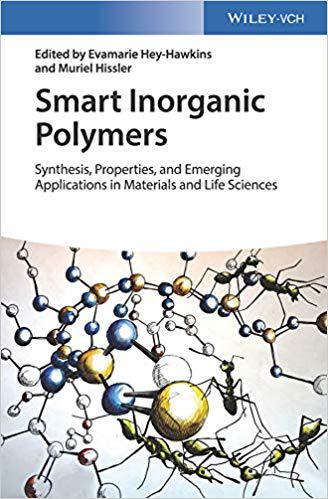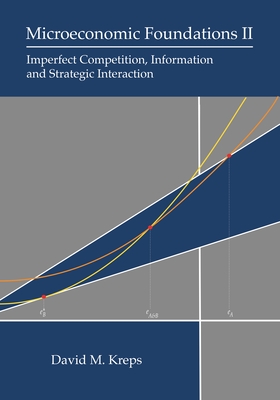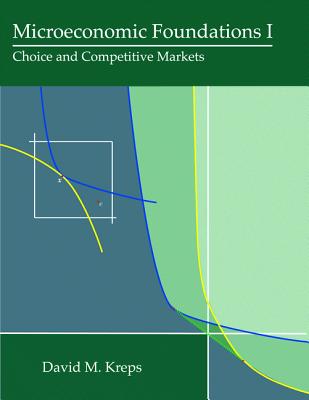图书简介
This book reflects the state-of-the-art in the field of inorganic polymers, based on research conducted by a number of internationally leading research groups working in this area. The synthesis part covers multiple inorganic monomers as building blocks which exhibit unprecedented electronic, redox, photo-emissive, magnetic, self-healing and catalytic properties. The second part deals with the applications of inorganic polymers in areas such as optoelectronics, energy storage, industrial chemistry and biology.
Preface xi 1 Current Status and Future Perspectives of Functional and Smart Materials in Daily Life 1 Rudolf Pietschnig 1.1 Introduction 1 1.2 Properties and Applications 1 1.2.1 Applications Based on Mechanical and Rheological Properties 1 1.2.2 Applications Based on Electronic Excitation 2 1.2.3 Applications Based on Optical Features 6 1.2.4 Applications Based on Supramolecular Recognition 9 1.2.5 Applications Based on Chemical Reactivity 10 1.2.6 Further Applications 12 1.3 Perspective 13 Acknowledgments 13 References 13 2 Boron-Containing Polymers 17 2.1Group 13-Group 15 Element Bonds Replacing Carbon-Carbon Bonds in Main Group Polyolefin Analogs 19 Anne Staubitz, Jonas Hoffmann, and Philipp Gliese 2.1.1 Introduction 19 2.1.2 Group 13-Group 15 Element-Containing Polyolefin Analogs with the Heteroatoms in the Main Chain 20 2.1.2.1 Poly(phosphinoboranes) 20 2.1.2.1.1 Metal Complexes as Catalysts for the Dehydrocoupling of Phosphine-Boranes 21 2.1.2.1.2 Lewis Acid Promoted Dehydrocoupling of Phosphine-Boranes 23 2.1.2.1.3 Lewis Base Promoted Dehydrocoupling of Phosphine-Boranes 24 2.1.2.1.4 Poly(phosphinoborane)-Based Materials 25 2.1.2.1.5 Potenial Applications of Poly(phosphinoboranes) 25 2.1.2.2 Poly(aminoboranes) 27 2.1.3 Group 13-Group 15 Element-Containing Polyolefin Analogs with the Heteroatoms in the Side Chain 32 2.1.3.1 Borazine-Containing PS Analogs 32 2.1.3.2 Azaborinine-Containing PS Analogs 33 2.1.4 Conclusion and Outlook 35 Acknowledgments 36 References 36 2.2 Highlighting the Binding Behavior of Icosahedral Boron Clusters Incorporated into Polymers: Synthons, Polymers Preparation, and Relevant Properties 41 Clara Vinas, Rosario Nunez, Isabel Romero, and Francesc Teixidor 2.2.1 Introduction 41 2.2.2 Conducting Organic Polymers Containing Icosahedral Boron Clusters 42 2.2.2.1 Icosahedral Boron Clusters as Doping Agents in COPs 43 2.2.2.2 Icosahedral Boron Clusters in COPs Side Chains to Modify the Chemical Composition and Act as Doping Agent 44 2.2.2.3 Icosahedral Boron Clusters Incorporated into the Polymer Main Chain of the COPs 45 2.2.3 Fluorescent Carborane-Containing Polymers 46 2.2.4 Thermally Resistant Carborane-Based Polymers 48 2.2.5 Coordination Polymers and Nanoparticles Incorporating closo-Carborane Clusters 50 2.2.5.1 Carboxylate-Functionalized Carboranes 50 2.2.5.2 Phosphinate- and Phosphino-Functionalized Carboranes 51 2.2.5.3 Nanohybrid Materials Based on Functionalized Carboranes 52 2.2.6 Conclusion and Outlook 55 Acknowledgments 55 References 55 3 Synthesis of Group 14 Metal-Containing Polymers 61 Ana Torvisco, Frank Uhlig, and David Scheschkewitz 3.1 Introduction 61 3.2 Organohydrides of Group 14, RnEH4 n 62 3.3 Diorganodihydrides of Group 14, R2EH2, as Building Blocks for Chain-Type Polymers 65 3.3.1 Metal-Catalyzed Dehydropolymerization 65 3.3.2 Dehydrogenative Coupling Using an Amine Base 65 3.3.3 Solvent- and Catalyst-Free Dehydrogenative Coupling 67 3.3.4 Condensation 68 3.4 Monoorganotrihydrides of Group 14, REH3, as Building Blocks for 3D Polymers 68 3.4.1 Metal-Catalyzed Dehydropolymerization 68 3.4.2 Dehydrogenative Coupling Using an Amine Base 69 3.5 Applications 72 3.6 Conclusion and Outlook 74 Acknowledgments 75 References 75 4 Synthesis of Polymers Containing Group 15 Elements 85 Andreas Orthaber and Alejandro P. Soto 4.1 Introduction 85 4.2 Conjugated Polymers Containing Group 15 Elements 86 4.2.1 Phosphaalkenes, Arsaalkenes, and Diphosphenes 86 4.2.2 Group 15-Based Heteroles 89 4.3 Polymers with two Unsaturated Organic Moieties Adjacent to the Heteroelement Motif 93 4.3.1 Cross-Conjugated Group 15 Heteroalkene-ContainingMaterials 93 4.3.2 Group 15 Elements with two Adjacent Alkynes, Alkenes, or Arene Motifs of the Polymer Backbone 94 4.3.2.1 Ring-Opening Polymerization 95 4.4 Organic-Inorganic Hybrid Polymers Containing Saturated Phosphorus Centers 96 4.4.1 Miscellaneous Polymers 97 4.5 Polyphosphazene 97 4.6 Poly(phosphoester)s 104 4.7 Conclusion and Outlook 107 Acknowledgments 107 References 107 5 Synthesis of Inorganic Dendrimers 115 Anne-Marie Caminade 5.1 Introduction 115 5.2 Main Methods of Synthesis of Silicon-Containing Dendrimers 115 5.2.1 Synthesis of Carbosilane Dendrimers 115 5.2.2 Synthesis of Other Types of Silicon-Containing Dendrimers 118 5.3 Main Methods of Synthesis of Phosphorus-Containing Dendrimers 120 5.3.1 Synthesis of Phosphorhydrazone Dendrimers 120 5.3.2 Synthesis of Other Types of Phosphorus-Containing Dendrimers 121 5.4 Synthesis of Miscellaneous Types of Inorganic Dendrimers 129 5.4.1 Synthesis of Dendrimers ContainingMain Group Elements Other than Si and P 129 5.4.2 Synthesis of Hybrid Dendrimers Containing at Least Two Types of Main Group Elements 132 5.5 Conclusion and Outlook 135 Acknowledgments 135 References 136 6 Metallo-Supramolecular Polymers 141 Jiri Vohlidal and Muriel Hissler 6.1 Introduction 141 6.2 Constitutional Dynamic Polymers: Dynamers 142 6.3 Main Types of Metallo-Supramolecular Polymers (MSPs) and Terminologies Related to Them 143 6.4 MSP Dynamers Derived from Unimers with Defined Structure 144 6.4.1 Synthesis of Unimers 144 6.4.2 Central Blocks of Conjugated Unimers 146 6.4.3 Assembly and Characterization of MSP Dynamers 148 6.4.4 Properties of Conjugated MSPs 151 6.5 Potential Applications and Outlook 155 6.5.1 Electrochromic Devices Based on the Modification of the Absorption Properties 155 6.5.2 Electrochromic Devices Based on the Modification of the Emission Properties 156 6.5.3 Ion Conductivity 157 6.5.4 Actuators 157 6.5.5 Outlooks 157 Acknowledgments 158 References 158 7 Applications of Heteroatom-Based Oligomers and Polymers in Optoelectronics 163 Matthew P. Duffy, Pierre-Antoine Bouit, and Muriel Hissler 7.1 Introduction 163 7.2 Organic Light-Emitting Diodes (OLEDs) 164 7.2.1 Application as Charge-Transport Layer 166 7.2.2 Application as Host for Phosphorescent Complexes 169 7.2.3 Application as Emitting Materials 171 7.3 Photovoltaic Cells (Organic Solar Cells [OSCs] and Dye-Sensitized Solar Cells [DSSCs]) 181 7.3.1 Dyes for Dye-Sensitized Solar Cells (DSSCs) 183 7.3.2 Donors in Organic Solar Cells (OSCs) 184 7.4 Application in Electrochromic Cells 188 7.5 Conclusion 189 Acknowledgments 189 Abbreviations 190 References 192 8 Inorganic Polymers as Flame-Retardant Materials 197 Raghvendra KumarMishra, Tarik Eren, and De-YiWang 8.1 Introduction 197 8.2 Importance of Flame-Retardant Materials 198 8.3 Application of Inorganic Polymer as a Flame-Retardant Material 200 8.3.1 Polysiloxanes 201 8.3.2 Polyphosphazenes 210 8.3.3 Polysilane and Polysilynes 220 8.3.4 Ferrocene-Based Polymers 222 8.3.5 Carborane-Containing Polymers 225 8.3.5.1 Poly(carboranylenesiloxanes) 226 8.3.5.2 Carborane-Containing High-Performance Thermoplastics 229 8.3.5.3 Carboranes as Miscellaneous Polymers 230 8.4 Conclusion 233 Acknowledgments 233 References 233 9 Inorganic Polymers for Potential Medicinal Applications 243 Andreia Valente, Rafaella L. M. Precker, and Evamarie Hey-Hawkins 9.1 Introduction 243 9.2 Inorganic Polymers and Metal-Containing Polymers for Tissue Engineering and Drug Delivery 243 9.2.1 Inorganic Polymers 243 9.2.1.1 Polysiloxanes 244 9.2.1.2 Polyphosphazenes 247 9.2.2 Metal-Containing Polymers 250 9.2.2.1 Platinum-Polymer Conjugates 251 9.2.2.2 Ruthenium-Polymer Conjugates 251 9.2.2.3 Carborane-Polymer Conjugates 254 9.3 Emerging and Potential Applications for Metal-Organic Frameworks for Drug Delivery 255 9.3.1 Metal-Organic Frameworks (MOFs) 257 9.3.2 Application of MOFs in Drug Delivery Systems 257 9.3.2.1 Selected Examples of MIL-n Frameworks in Drug Delivery 258 9.3.2.2 Selected Other Metal-Organic Frameworks Used in Drug Delivery 262 9.3.3 Toxicity and Stability 263 9.3.3.1 Toxicity 263 9.3.3.2 Stability 265 9.3.4 Biodegradation 265 9.4 Final Remarks and Perspectives 266 Acknowledgments 267 References 267 10 Inorganic Dendrimers and Their Applications 277 Anne-Marie Caminade 10.1 Introduction 277 10.2 Inorganic Dendrimers as Catalysts 278 10.2.1 Overview of the Use of Inorganic Dendrimers as Catalysts 278 10.2.2 The Dendrimer Effect Illustrated with Catalytic Inorganic Dendrimers 280 10.2.3 The Recovery and Reuse of Catalytic Inorganic Dendrimers 283 10.3 Inorganic Dendrimers for Nanomaterials 287 10.3.1 Elaboration of Materials and Nano-objects Exclusively Composed of Inorganic Dendrimers 288 10.3.2 Hybrid Materials Incorporating Inorganic Dendrimers 291 10.3.3 Modification of the Surface of Materials with Inorganic Dendrimers Toward Biological Uses 293 10.4 Inorganic Dendrimers in Biology/Nanomedicine 296 10.4.1 Inorganic Dendrimers for Bioimaging 296 10.4.2 Inorganic Dendrimers for Gene Therapy 298 10.4.3 Inorganic Dendrimers Against Viruses 299 10.4.4 Inorganic Dendrimers in Brain Diseases 301 10.4.5 Inorganic Dendrimers Against Cancers 301 10.4.6 Inorganic Dendrimers Against Inflammatory Diseases 302 10.5 Conclusion and Outlook 304 Acknowledgments 304 References 305 11 Other Examples of Inorganic Polymers as Functional Materials 317 IreneWeymuth and Walter Caseri 11.1 Introduction 317 11.1.1 1,2,4-Triazole in Coordination Chemistry 317 11.1.2 Spin-Crossover 319 11.2 Coordination Polymers of 4-Aminotriazole and Iron(II) 322 11.2.1 Solutions 322 11.2.2 Solid State 324 11.3 Coordination Polymers of 4-Alkyltriazoles and Iron(II) 327 11.4 Coordination Polymers of 1,2,4-Triazoles and Other Metals 330 11.5 Conclusion and Outlook 332 Acknowledgments 333 References 333 Index 337
Trade Policy 买家须知
- 关于产品:
- ● 正版保障:本网站隶属于中国国际图书贸易集团公司,确保所有图书都是100%正版。
- ● 环保纸张:进口图书大多使用的都是环保轻型张,颜色偏黄,重量比较轻。
- ● 毛边版:即书翻页的地方,故意做成了参差不齐的样子,一般为精装版,更具收藏价值。
关于退换货:- 由于预订产品的特殊性,采购订单正式发订后,买方不得无故取消全部或部分产品的订购。
- 由于进口图书的特殊性,发生以下情况的,请直接拒收货物,由快递返回:
- ● 外包装破损/发错货/少发货/图书外观破损/图书配件不全(例如:光盘等)
并请在工作日通过电话400-008-1110联系我们。
- 签收后,如发生以下情况,请在签收后的5个工作日内联系客服办理退换货:
- ● 缺页/错页/错印/脱线
关于发货时间:- 一般情况下:
- ●【现货】 下单后48小时内由北京(库房)发出快递。
- ●【预订】【预售】下单后国外发货,到货时间预计5-8周左右,店铺默认中通快递,如需顺丰快递邮费到付。
- ● 需要开具发票的客户,发货时间可能在上述基础上再延后1-2个工作日(紧急发票需求,请联系010-68433105/3213);
- ● 如遇其他特殊原因,对发货时间有影响的,我们会第一时间在网站公告,敬请留意。
关于到货时间:- 由于进口图书入境入库后,都是委托第三方快递发货,所以我们只能保证在规定时间内发出,但无法为您保证确切的到货时间。
- ● 主要城市一般2-4天
- ● 偏远地区一般4-7天
关于接听咨询电话的时间:- 010-68433105/3213正常接听咨询电话的时间为:周一至周五上午8:30~下午5:00,周六、日及法定节假日休息,将无法接听来电,敬请谅解。
- 其它时间您也可以通过邮件联系我们:customer@readgo.cn,工作日会优先处理。
关于快递:- ● 已付款订单:主要由中通、宅急送负责派送,订单进度查询请拨打010-68433105/3213。
本书暂无推荐
本书暂无推荐















